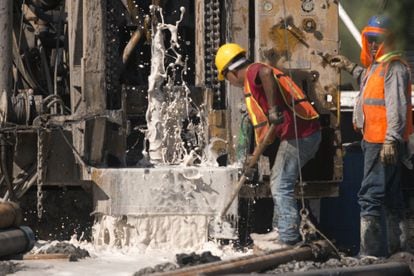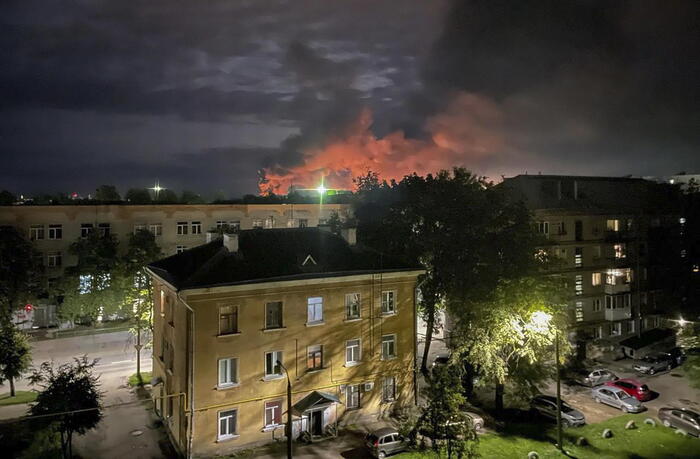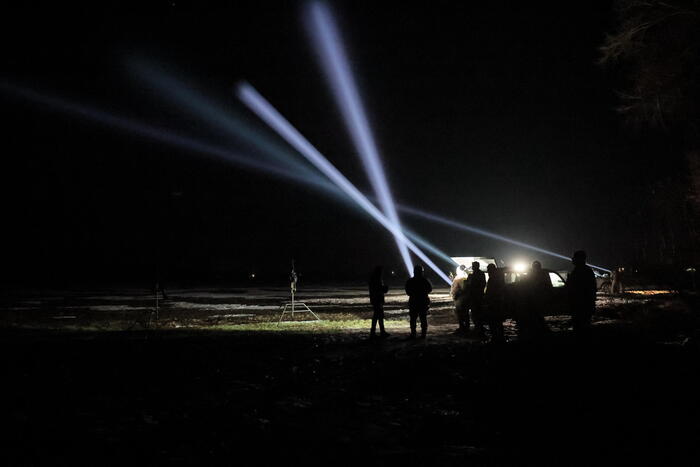Sabinas has been holding her breath for more than a week, waiting to hear from the 10 workers who were trapped after the collapse of a coal mine on August 3.
The anguish of the rescue after the flooding of the well has run into another uncertainty surrounding the disaster in Coahuila: an avalanche of irregularities, suspicions of corruption and negligence that triggered the collapse and have made rescue efforts difficult.
Four specialists in Geology, Civil Protection and Mining unravel their doubts and questions about what were the failures that were committed, who was responsible and what needs to change in the industry to prevent an emergency like this from happening again.
"We can only hope for a miracle," says the geologist Delfino Hernández, with more than 25 years of experience in Civil Protection and Risk Management.
The academic from the Autonomous Metropolitan University (UAM) focuses on all the official prevention regulations that were not complied with: from specific guidelines on safety in underground mines to emergency protocols, risk mitigation measures and relevant regulations on signaling, work at heights, necessary equipment, exploitation and construction work.
Hernández, certified in several of these regulations, assures that many things were left undone: "There are endless breaches and irregularities."
Wendy Morales and Sergio Rodríguez, academics from the Institute of Geology of the National Autonomous University of Mexico (UNAM), emphasize that in the case of Sabinas, everything indicates that the necessary precautions were not taken in the presence of water and methane gas in the subsoil or Geological conditions that could affect coal extraction were studied.
Neither did the alarm systems work, the evacuation routes, and there was no monitoring of the civil works, the structure or the need to stabilize the well and the tunnels, according to the information that has been made public.
The researchers point out that there are no plans of the mine, logs to monitor the work of the miners, or documents that prove that the protocols have been complied with or that they have been trained to respond to an emergency.
"This makes the rescuers go blind and define their strategy as they face these obstacles," says Morales.
"It is possible that the rescue efforts will continue for several weeks," he adds.
Miners and emergency personnel work in the mine area this Thursday. ANTONIO OJEDA
"Carrying out a rescue like this is not an easy task," says Rodríguez, who points out that it is a whole host of factors that precipitated the incident and avoids talking about a generalized phenomenon in the industry as a result of this incident.
To the depth, the lack of visibility and the flooded terrain, there is the challenge that the conditions in the subsoil are changing.
The material is still moving and there may be a risk of further collapse.
In scenarios like this, rushing means also endangering the lives of rescuers and is another factor to consider so that the damage is not greater.
"You do the best you can," says the academic, "but prevention had to have been a constant job, every day."
The mining law establishes that the companies must guarantee the security conditions so that the Government grants them an exploitation concession.
In the case of the collapsed mine in the Las Conchitas area, the concession was granted in 2003 to Minera Río Sabinas SA de CV, but later transferred to the El Pinabete mining company, authorities have reported.
Aleida Azamar, a UAM researcher, questions that this transfer was not properly recorded in the commercial records and assures that it is a key point to understand the irregularities.
It is not affiliated with the mining chamber, there is no tax information or its security protocols, says Azamar.
"It is an extremely opaque context and a frankly worrying issue," says the academic, who has followed the mining industry for 10 years.
The alleged owner of the mine, Cristian Solís Arriaga, is "a young worker, without any kind of wealth and who is very possibly a front man," says Azamar.
In the background of the rescue, Regulo Zapata, former mayor of Sabinas, has also been identified as one of the real owners.
The politician has disclaimed any link with Pinabete.
The controversy has reached the morning conference of Andrés Manuel López Obrador.
The president has said this Friday that the hypothesis that Solís is a straw man is feasible and he has urged the Prosecutor's Office to find all those responsible.
The irregularities around the property have a direct impact on the tragedy, due to the working conditions of the workers and the distribution of responsibilities.
López Obrador also touched on the issue that the concession was granted for 50 years, it expires in 2053. Azamar affirms that this is another delicate point: after a collapse like this, the concession is suspended, but it is not lost.
"There is obvious corruption between businessmen and governments, because these projects are allowed to operate," says Azamar.
"The main cause of this disaster is the flexibility of the mining law with businessmen, they are allowed to do anything as long as they pay," he says.
"The mining area does not escape from a country that is corrupt and from some officials who are clearly not competent," agrees Hernández, adding that corruption is more common when granting permits.
"There is no political will at any level of government to attack the underlying problem," she says.
Men carry out rescue work on August 9. JULIO CESAR AGUILAR (AFP)
López Obrador directly pointed to the “neoliberal period” as the origin of these irregularities.
But the collapse has also affected the austerity policy of this Administration.
Hernández comments that the regulations are well defined, but the problem is that compliance with the law is not monitored.
Azamar says that the inspectors of the Ministry of Labor and Social Welfare are not enough and have few resources.
They are not the only ones who have made these accusations and the portfolio in charge of Luisa María Alcalde has refuted in a statement this Friday that practically four out of ten mining inspections have been carried out in the coal zone of Coahuila (387 in the last three years) , that 84% of the concessions that have been suspended are in that State and that three out of every four fines that are imposed are on mining companies from that entity,
But there are many more in charge of compliance: the Ministry of Economy grants the concessions, Health and the Mexican Institute of Social Security should review the conditions of the workers, the state environmental authorities must monitor pollution and Civil Protection has surveillance powers.
The extractivist model and the legislation that favors the mining companies are also being questioned again, as well as the permanent demand for coal for electricity production from the Federal Electricity Commission and the scope of the prosecutor's offices to seek justice.
The official standard on underground mines (NOM-032-STPS-2008) establishes that workers must use personal protection equipment, have security services and their own rescue brigade, receive regular medical attention and training, identify risks and accredit compliance with regulations as obligations of the employer.
In the background of the collapse of Sabinas and episodes such as Pasta de Conchos, in which 65 people died, the political, social and technical factors are touched on with the precariousness and lack of guarantees for the miners, who have assured that they would return to work. due to the lack of job opportunities and alternatives.
"Companies prioritize profits, the rest is in the background," laments Hernández.
The researcher warns of the urgency of a turn: "If things do not change,
subscribe here
to the
newsletter
of EL PAÍS México and receive all the informative keys of the current affairs of this country




/cloudfront-eu-central-1.images.arcpublishing.com/prisa/NHAGPMQH45FWPHD273W2SBSACU.jpg)







/cloudfront-eu-central-1.images.arcpublishing.com/prisa/KMEYMJKESBAZBE4MRBAM4TGHIQ.jpg)


